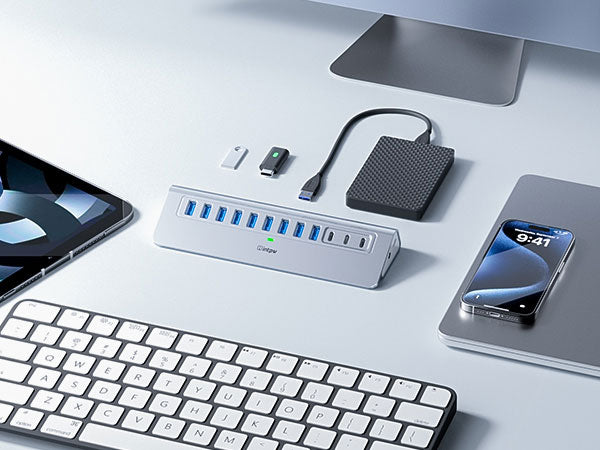
Unlocking Productivity: The Necessity and Use of Multi-Screen Collaboration Docks
, by USintpw, 6 min reading time

, by USintpw, 6 min reading time
In today’s fast-paced world, productivity and efficiency are key priorities for professionals, students, and anyone working with digital devices. The rise of hybrid work, remote teams, and digital multitasking has made single-screen setups feel increasingly limiting. Enter the multi-screen collaboration dock—a versatile tool designed to expand your workspace and redefine how you interact with technology.
This blog explores the necessity of multi-screen collaboration docks and how to make the most of them, using straightforward language and practical examples.
Think about a time when you had multiple tasks open on your computer—your email, a presentation, a video call, and a document. Switching between these windows can feel like juggling, slowing down your workflow and causing frustration. A single screen forces you to prioritize visibility, but this comes at the cost of speed and focus.
Multi-screen collaboration docks solve this problem by letting you connect multiple displays to your laptop or device. With additional screens, you can dedicate one to communication, one to content creation, and another to research or monitoring. This setup mimics the experience of having a digital command center, enabling smoother transitions between tasks and significantly improving productivity.
Professionals across industries can benefit from multi-screen docks. For instance:
These docks also benefit educators, content creators, and gamers, offering flexibility that traditional setups cannot match.
In team settings, multi-screen docks shine even brighter. Imagine hosting a meeting where you share a presentation on one screen while keeping your notes and chat visible on another. This eliminates the need to disrupt your flow by toggling between windows, allowing you to present confidently and stay connected with your audience.
Multi-screen setups also enhance brainstorming sessions. When connected through a dock, team members can interact with multiple shared displays, speeding up decision-making and encouraging creative problem-solving.
As technology evolves, the demand for multitasking will only increase. Investing in a multi-screen collaboration dock prepares you for these changes. Many docks support advanced features like 4K resolution, high refresh rates, and multiple device compatibility, ensuring your setup stays relevant for years to come.
Multi-screen docks come in various shapes, sizes, and capabilities. Some support two screens, while others allow up to four or more. Before purchasing a dock, consider the following:
By choosing a dock that matches your work style, you set the foundation for a seamless multi-screen experience.
Position your screens in a way that maximizes comfort and efficiency. A common arrangement is one central screen with additional displays on either side. This layout reduces neck strain and keeps all essential information within your line of sight. Adjustable monitor stands can further enhance ergonomics.
Consider the type of content displayed on each screen. For instance:
Organizing your workspace thoughtfully ensures you can access everything you need without distraction.
Modern operating systems offer features to optimize multi-screen use:
Learn and use these tools to get the most out of your setup.
One of the biggest advantages of multi-screen docks is their ability to connect various devices. Here are a few examples:
The dock acts as a hub, making your entire workflow more cohesive and efficient.
Like any technology, multi-screen docks can occasionally encounter problems. Here are solutions to common challenges:
By addressing these issues promptly, you can maintain a smooth, uninterrupted workflow.
These small adjustments can make a big difference in how enjoyable and effective your multi-screen experience becomes.
Multi-screen collaboration docks are more than just gadgets; they are essential tools for modern productivity. They enable smoother workflows, enhance collaboration, and future-proof your workspace against the demands of an increasingly digital world. Whether you’re a professional, student, or creative, investing in a dock can transform how you work and interact with technology.
With the right dock and a thoughtful setup, you can unlock your full potential, taking productivity and creativity to the next level. So, why settle for a cramped screen when you can expand your horizons? Embrace the multi-screen dock and redefine the way you work.

Subscribe to our emails